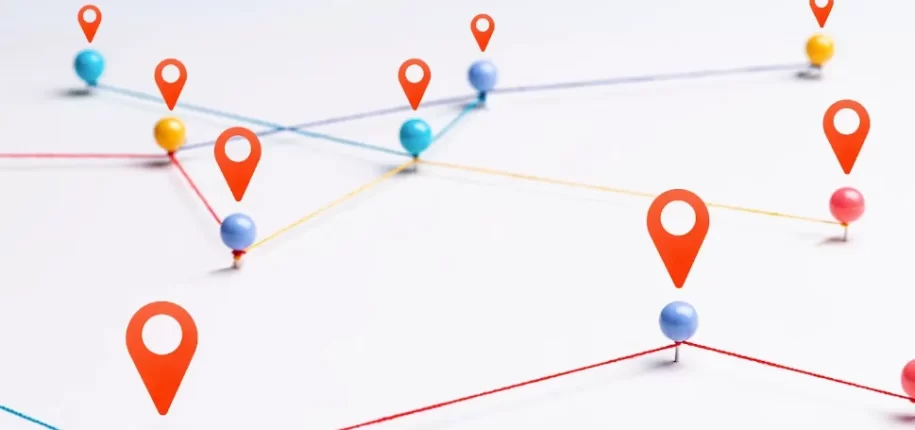From Silos to Cohesion: How Our Business Map Strategy Brought Alignment and Focus
The key to scaling a technology company is aligning company-level objectives, developing a strategy, planning and executing that strategy, and refining it until desired objectives are achieved. Clear communication is the backbone of this process and is often underrated, yet critical to success.
As our company (https://ukko.ag/) grew and the product evolved, the teams (Engineering, Applied Research, Product Management, Customer Success, and Sales and Marketing) faced growing pains such as a lack of clarity and a disconnect between teams and company strategy. Despite following agile practices, having a roadmap, talking to our customers, and using OKRs, there were still silos within the company. Around this time I learned about Tony Fadell’s approach to applying customer journey and touchpoints in building products at Nest Labs. Taking inspiration from this, we realized that as a company, we’d have to move away from departmental thinking and towards functional thinking with a more cohesive, single-flow approach to our business.
We developed a concept called Business Map
To achieve this, we developed a concept called the “Business Map”. This concept connected our company-level OKRs, business strategy, tech strategy, and company-wide OKRs with our product management approach. The idea was to create a clear and single flow to our business in a scalable, repeatable, and easily communicable way. The goal was to ensure that our team members, as well as investors and advisors, understood how everything connected and how to prioritize efforts to achieve desired outcomes at a company, functional, and individual team member level.
Setting up the Business Map
Created in a google sheet, we mapped out the following:
- Strategy Context:
This section clearly called out the vision, mission, business strategy for the target period, tech strategy for the target duration, and company-level OKRs.

2. Business Dimensions
In this section, we defined all the dimensions of our business from a customer journey and customer touchpoint perspective. For each dimension, we also defined key questions that we had to answer in delivering the target customer experience. There can be more dimensions, but in our case, we started with and defined the following overall core dimensions:
-Awareness
-Education
-Acquisition
-Product
-Analytics and Usage
-Support
-Loyalty
3. Connecting Strategy Context and Business Dimensions
For each business dimension, we created a new tab in this file. OKRs were identified for each dimension with a direct correlation with the functional capabilities of the team/company. All these OKRs contributed directly to the company-level OKRs. Being very targeted, we defined the initial direction on how to achieve each key result and tracked interdependencies across dimensions, which are bound to happen and are a good thing. This encouraged dialogue across teams and a collaborative culture.
4. Adapting Product Dimension to link with product teams
As the complexity of a dimension increases, we adapted that dimension to reflect our reality and where we wanted to be. For example, in the Product Dimension, we added the ‘Prioritization Category’ which really is our tech strategy. We further divided OKRs by Product and Engineering to reflect the infrastructure-level work that engineering would take on. Engineering would also support Product OKRs and would be part of the product teams. As applicable, the key results in this tab were linked to our agile and product management approach. They branched off from here to live on as user stories/epic, etc
5. A rolled-up dashboard to manage it all
To answer the question, “are we heading in the right direction in the right priority order across our core business?” we created a dashboard tab that pulled the data from all the other tabs, overlaying the sprint-based calendar view. This was the top-level view that could be scaled up as our business operations would grow, the strategy would change, and objectives would evolve.
Now comes the heavy lifting, populating strategy context and OKRs:
In creating strategy and company-level goals, we evaluated qualitatively and quantitatively data, SWAT analysis, and feedback from our customers, advisors, and board. Once consolidated, we articulated a simple focused strategy, company-level objectives, and the key results. The Strategy Context tab of the business map summarized this. The business map is open to all our team members.
In writing OKRs, we worked with each subject matter expert to understand what would it take to achieve the company-level objectives and key results from their perspectives. These perspectives were converted into OKRs across the appropriate business dimension.
Following the discipline of execution
Every week, we would go through this business map with representation from each functional capability to cover the following:
- What has been completed across each business dimension? What is the implication on other dimensions? What support, if any, is required?
- What’s the target for the next week, what support is required?
- Follow-up from the last week
Immediately we started to observe the following benefits:
- Across the company, there was much better awareness within our teams of what work is being done and what’s the implication of that work on the entire business and our customers
- A transparent culture with functional thinking was established which very much limited the departmental thinking
- As a company, we all felt much more focused, aligned, and predictable in delivering more with less
- In addition to the contribution from many other factors, we doubled our revenue during this period
Conclusion
The business map concept can easily be scaled up and down at the company level, program level, or team level. It can be easily fused with your preferred development and product management methodologies. Feel free to reach out if you’d like to access our business map template, or discuss how this may help you.
